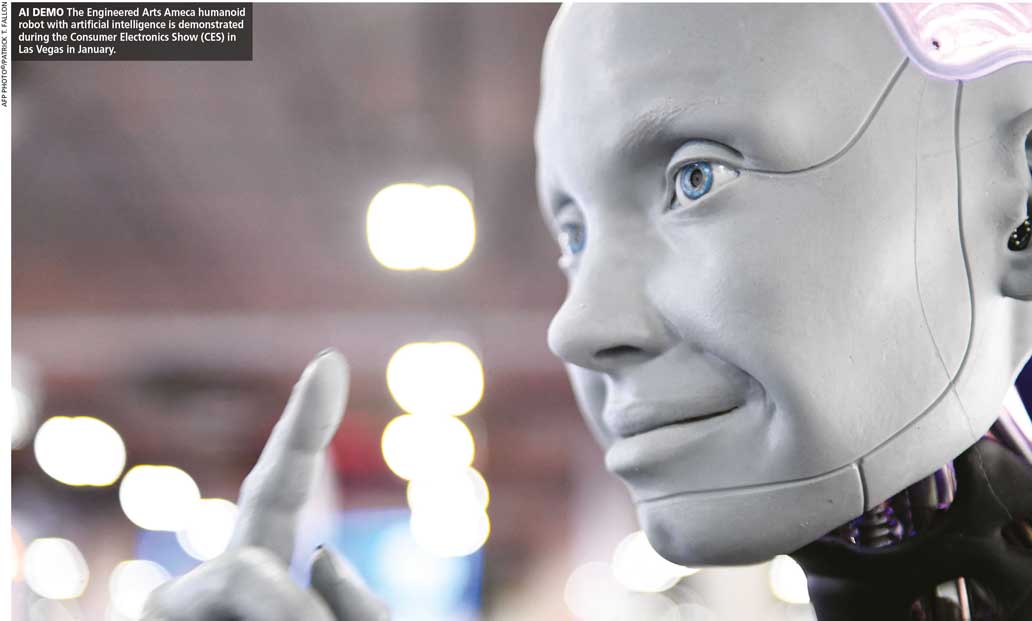CORPORATE SUCCESS
LIFELONG LEARNING CULTURE
Growth in artificial intelligence will require new skills to be learnt – Sanjeewaka Kulathunga

In the age of AI, creating synergies between humans and machines will be the winning formula for corporate success. The invention of steam power in the 17th century heralded an age where machines replaced human muscle power. The Second Machine Age led by artificial intelligence has the potential to replace humans in areas of brainpower – a trait that distinguishes Homo sapiens from other species.
Tesla and SpaceX CEO Elon Musk has identified AI as the greatest existential threat to humankind. The late Stephen Hawking was very concerned that future advances in AI “may signify the end of the human race.”
Alternatively, as well-known author and historian Yuval Noah Harari puts it, “AI will create a worthless class” of society.
These concerns stem from breakthrough advancements in the field of machine learning where technology is augmenting and substituting human intelligence.
The application of artificial intelligence has permeated almost every industry and business, and even regular human activities. It’s already helping enterprises to automate their operations by providing true insights through advanced data analytics while interacting with customers and employees using natural language processing chatbots.
Meanwhile, the active use of AI has aided in the rapid development of diagnostics, vaccinations and treatment protocols for the COVID-19 pandemic. Therefore, the need of the hour is to boost human skills with the assistance of these intelligent devices while keeping fears and concerns at bay.
So business leaders must acquire a set of skills and abilities to integrate smoothly the mechanical with human workforces and other stakeholders.
With the rapid development of advanced technologies discovered in a virtual world of data and information, the nature and quality of current products and services are becoming obsolete daily.
For example, the average product life cycle for smartphones is 12-24 months. Since new models with innovative product features are being launched regularly, this makes currently popular models obsolete.
Having realised the drastic changes in a technological environment, business leaders should be proactive and embrace the speed of change, and use up-to-date information to keep their organisations ahead of the competition.
It is obvious that humans can outperform robotic machines in terms of emotions and empathy despite the fact that AI-enabled technologies are invading various industries. The capacity to regulate one’s emotions and connect with people provides a distinct advantage where corporate success is dependent on influencing others in the contemporary business world.
More than 2.5 quintillion bytes of data are created every day, accelerating the growth of IoT. Machines are obviously outstripping humans in recognising patterns from data and information in the digital space.
Accordingly, corporate leaders will be required to cultivate a long-term vision for data to distinguish signals from noise and apply dashboards, to carve out an effective business strategy, vision and mission for their organisations. Mapping, mining, preparation, modelling, analysis, assessment and implementation of data solutions are typical steps in the process.
Considering the ultimate capacity of AI to analyse and calculate uncountable information, Hong Kong-based venture capital firm Deep Knowledge Ventures (DKV) appointed the first AI robot to its board of directors in 2017. As a result, DKV wouldn’t make any positive investment decisions until the AI director bot gave its consent!
In the age of digitalisation, the long-term prosperity of a business always depends on its ability to innovate processes relative to the fast changing needs and wants of its customers. Consequently, innovation must be ‘innovated’ in order to leverage artificial intelligence to boost organisational productivity, and engage more consumers and workers with improved service deliveries, as well as optimised business outcomes.
According to various studies, 30-40 percent of current jobs would have disappeared by 2030 due to fast-growing AI. Nevertheless, even while some jobs will be lost, novel forms of work will spring up in the future.
So leaders must build an enabling atmosphere in which humans and machines may coexist, compensate for each other’s limitations and build on the strengths of both parties.
Leaders will need to develop a culture of lifelong learning as AI grows in size and scale. To survive in the information age, a person will be required to learn new skills every 10 years or so.
And the most daunting challenge for corporate leaders will be to sustain human elements by leveraging their capabilities, which can’t be replicated by smart AI machines.



